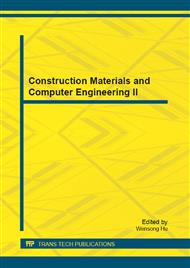p.3
p.9
p.15
p.21
p.27
p.31
p.35
p.43
Effect of Bracing Elements on Mechanics and Shear Strength of Exterior Beam-Column Joints in Moment Resisting Frames
Abstract:
Beam-column joint in moment resisting frames is very crucial particularly for non-seismically designed cases, which requires strengthening by various methods. This paper reports on shear strength reduction in exterior beam-column joints using haunch elements. Numerical analysis has been performed on exterior beam-column joint of moment resisting frame with and without a haunch element using SAP software. A parametric study has been performed for optimum haunch location (L) along the beam length (Lb) (10%, 12.5%, 15%, 20%, 25%, 40% and 50% of Lb) and the angle of the haunch element along column axis (15°, 30°, 45° and 60°). It has been observed that the optimum location of the haunch element is at 0.2Lb along the beam at an inclination of 45° with the column axis. The analysis results show that the addition of haunch element significantly reduced the joint shear strength.
Info:
Periodical:
Pages:
15-19
Citation:
Online since:
July 2013
Authors:
Price:
Сopyright:
© 2013 Trans Tech Publications Ltd. All Rights Reserved
Share:
Citation:


